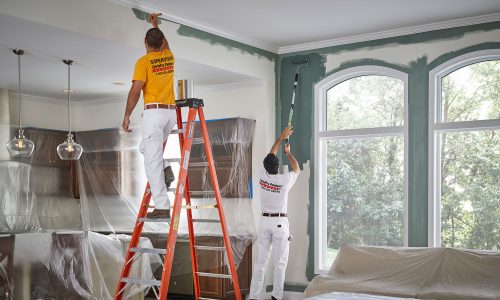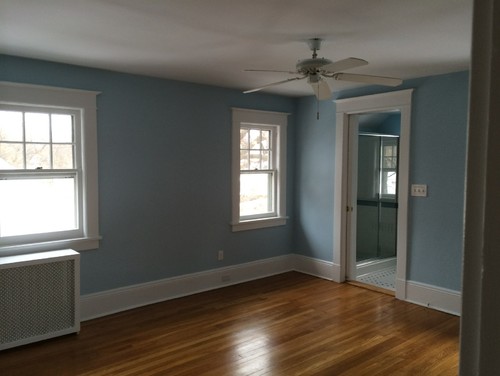Lakewood Interior Painting: Expert Services to Refresh Your Home’s Style
Lakewood Interior Painting: Expert Services to Refresh Your Home’s Style
Blog Article
Enhance Your Interior Decoration With Comprehensive Shade Examination
The integration of shade examination into interior decoration presents a distinct chance to improve and boost the aesthetic and psychological vibration of an area. By involving with an experienced color expert, you can browse the complexities of shade option, making sure that your selections not just complement architectural attributes yet additionally reverberate with individual style and mental impact. This calculated partnership can dramatically influence the overall ambience of your setting, fostering a sense of harmony and function. Nevertheless, recognizing the subtleties of this process is essential-- what essential aspects should be thought about to accomplish ideal results?
Benefits of Shade Examination

Moreover, shade assessment aids in making the most of all-natural light and enhancing spatial assumption. Lighter shades can make an area show up even more expansive, while darker tones produce an intimate setting. Cleveland Metro Painting Specialists. This tactical application of shade can substantially influence the general ambiance of any kind of indoor area
In addition, specialist consultants possess an extensive understanding of present patterns and timeless standards, guaranteeing that the chosen shades will certainly stay enticing with time. This insight can save customers from pricey redesigns in the future. Lastly, color examination equips clients by supplying them with a clear vision and instructions, fostering confidence in their style choices and eventually causing a more satisfying and successful interior decoration end result.
Recognizing Color Psychology
The relevance of shade psychology in indoor style can not be overemphasized, as it looks into the psychological and psychological results that numerous colors can evoke in individuals. Shades can influence mood, actions, and even performance, making them an essential consideration in any kind of design task.
As an example, warm shades such as red, orange, and yellow are frequently connected with energy and heat. They can stimulate sensations of exhilaration and convenience, making them appropriate for social areas like living rooms or kitchen areas. Conversely, great shades like blue, green, and purple tend to stimulate calmness and peace, making them excellent for bedrooms or reflection areas.
Additionally, making use of neutral tones can produce a balanced setting by permitting the bolder colors to stand out without frustrating the senses. Recognizing these emotional influences makes it possible for designers to create rooms that not just look visually pleasing but additionally promote psychological health.
Including shade psychology into interior decoration includes a thoughtful choice of tones tailored to the intended feature of each area, ultimately boosting the general experience for its owners. This recognition is critical for achieving a unified and functional interior environment.
The Shade Wheel Described
Understanding the partnerships in between hues is essential for effective indoor design, and the color wheel works as an important device in this procedure. The shade wheel, established by Isaac Newton in the 17th century, illustrates the spectrum of shades prepared in a circular style. It consists of main shades-- red, blue, and yellow-- that can not be created by blending other shades. Second shades, formed by integrating primaries, include eco-friendly, orange, and purple. Tertiary shades arise from blending a key and a second shade, causing hues such as red-orange and blue.
The color wheel helps developers understand the relationships between colors, consisting of corresponding, comparable, and triadic schemes. Corresponding colors, positioned contrary each various other on the wheel, create vibrant contrasts that can invigorate a room. Analogous straight from the source colors, situated beside one an additional, supply a cohesive and unified appearance. Triadic systems utilize 3 equally spaced colors, using equilibrium and visual interest.
Utilizing the shade wheel in interior style not only boosts visual charm yet additionally stimulates particular feelings and atmospheres, making it a crucial recommendation for shade appointment. Comprehending these relationships inevitably empowers developers to produce spaces that are both useful and aesthetically captivating.
Selecting the Right Scheme
Typically, selecting the appropriate combination is a crucial consider achieving a successful interior decoration project. An appropriate color design can combine a room, improve its attributes, and evoke wanted emotions. To begin, think about the purpose of the space. Various areas offer different features and require palettes that mirror their desired use; for example, peaceful shades such as soft blues or greens work well in bedrooms, advertising leisure.
Light can considerably modify exactly how shades show up, so it is crucial to examine the room at various times of the day. An unified palette must complement these attributes, developing a cohesive appearance throughout the room.
When choosing colors, utilize the 60-30-10 regulation, which suggests that 60% of the area need to be a dominant shade, 30% a secondary color, and 10% an accent shade. This proportion guarantees equilibrium and aesthetic rate of interest (Cleveland Metro Painting Specialists). Lastly, example colors on the wall surfaces prior to committing, as this allows you to see exactly how the hues communicate with each other and the general setting they produce in your interior decoration job.
Collaborating With a Color Specialist

When dealing with a shade consultant, the procedure generally begins with an initial assessment. Throughout this meeting, you'll discuss your vision, choices, and the existing components in your room. The expert will evaluate your needs and may recommend certain shade combinations that straighten with your objectives.
After establishing a direction, the professional will certainly supply examples and aesthetic help to help you picture the recommended color over at this website design. This action is crucial, as colors can show up in a different way under varying lights YOURURL.com conditions.
Additionally, a shade consultant can assist you in picking corresponding furnishings, art work, and accessories to integrate with your picked combination. By collaborating closely, you can achieve a polished aesthetic that boosts your interiors and develops a welcoming atmosphere. Inevitably, the knowledge of a shade expert can substantially enhance the overall influence of your design project.
Verdict
In recap, comprehensive shade assessment acts as an essential tool for boosting interior design. By leveraging professional understanding of shade psychology and spatial characteristics, a customized color combination can be created to evoke specific feelings and develop an unified environment. This tactical technique not only promotes a cohesive style narrative but additionally alleviates the risk of costly redesigns. Eventually, engaging with a color consultant makes sure a notified and visually pleasing end result, elevating the total experience of the space.
By involving with an experienced shade professional, you can navigate the intricacies of color option, making certain that your choices not only enhance building features but likewise reverberate with personal design and mental effect. It consists of main shades-- red, blue, and yellow-- that can not be developed by mixing various other colors.The color wheel helps designers grasp the connections between colors, consisting of corresponding, similar, and triadic schemes.When selecting colors, utilize the 60-30-10 policy, which suggests that 60% of the room should be a dominant shade, 30% a second shade, and 10% an accent shade. By leveraging expert knowledge of color psychology and spatial dynamics, a tailored color scheme can be created to stimulate details feelings and produce an unified atmosphere.
Report this page